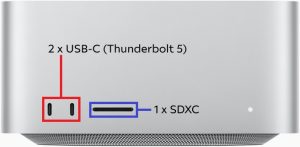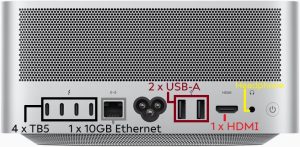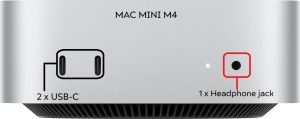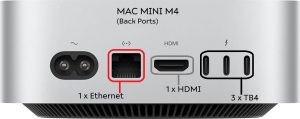Is the Mac Studio an overkill for Music Production?

Asking for a Friend… and His Wife.
Yesterday, a very close friend of mine—let’s call him “NotMe”—showed up at my studio with his equally brilliant wife (also a music producer), both wearing matching expressions of tech-induced existential crisis. Their question?
 “Should we buy the Mac Studio M4 Max? Or is the new Mac mini with the M4 Pro enough for our music production needs?”
“Should we buy the Mac Studio M4 Max? Or is the new Mac mini with the M4 Pro enough for our music production needs?”
Ah yes, the age-old question: “Do I need a Ferrari to drive to the grocery store?”
Let’s break this down with the love and sarcasm it deserves.
The Specs Don’t Lie… But They Do Taunt You
The Mac Studio with M4 Max (or M3 Ultra if you enjoy cooking breakfast on your CPU) is a monster. It’s the apex predator of Apple’s silicon jungle—ready to handle 500-track film scores, Dolby Atmos sessions with 64-channel beds, and probably run your toaster if you ask politely.
Atmos sessions with 64-channel beds, and probably run your toaster if you ask politely.
But let’s be real. If your average day in the studio involves a Logic Pro session with 50 tracks, a few Kontakt instances, and some vintage plugins you downloaded from a sketchy forum in 2011, then you don’t need a nuclear reactor under your desk. You need something fast, efficient, and less expensive than your first car.
Enter the Mac mini with M4 Pro. This little beast is like a Shih Tzu that thinks it’s a Rottweiler. It may not have the swagger of the Studio, but it will chew through your Ableton Live session with Diva, Serum, and 16 instances of Valhalla reverb like a champ.
But What If I Go Big Later?
Good question. Every producer has that fantasy:
“One day, I’ll have a 400-track orchestral template and score for Hans Zimmer’s cousin.”
Cool. But are you doing that today?
 The Mac mini M4 Pro (especially with maxed-out RAM) is future-friendly. Apple’s M-series chips are already optimized for audio tasks, and unless you’re actively mixing Dolby Atmos while editing 8K video and running an AI mastering chain that talks back to you, you’re unlikely to max it out.
The Mac mini M4 Pro (especially with maxed-out RAM) is future-friendly. Apple’s M-series chips are already optimized for audio tasks, and unless you’re actively mixing Dolby Atmos while editing 8K video and running an AI mastering chain that talks back to you, you’re unlikely to max it out.
If your future holds cinematic scoring or immersive audio, then yes, a Mac Studio might become a necessary weapon. But until then, you’re probably paying a premium to render silence faster.
Ports, Ports, Ports
Let’s not ignore the elephant in the room: the Mac Studio has more ports than an international shipping terminal. Thunderbolt galore. HDMI for days. And it looks very serious sitting on your desk—like it has a mortgage.
But the Mac mini? Still respectable. You may need a hub or dock, sure. But ask yourself: do you want to spend ₹70,000 extra for native SD card access? Didn’t think so.
The Emotional Core of the Purchase
Let’s admit it: part of us just wants the Studio because… it sounds cool. It’s got “Studio” in the name. It feels like buying it will suddenly make your mixes Grammy-ready and your production workflow 38% more professional.
But trust me, friends—no chip upgrade can fix a badly EQ’d snare or a rushed vocal take.
The Final Verdict
Buy the Mac mini M4 Pro with the highest RAM you can afford. It’s powerful, quiet, and more than capable of handling professional-grade music production for 90% of users.
Unless you’re already working with ridiculous track counts, surround audio, or real-time audio/video post, the Mac Studio M4 Max is… drumroll please… overkill.
Save the cash for what really matters—like that vintage synth on Reverb you keep eyeing but pretend you don’t want.
TL;DR
Buy what you need, not what your gear envy wants.
And remember, it’s not about the size of your chip—it’s how you use your DAW.








